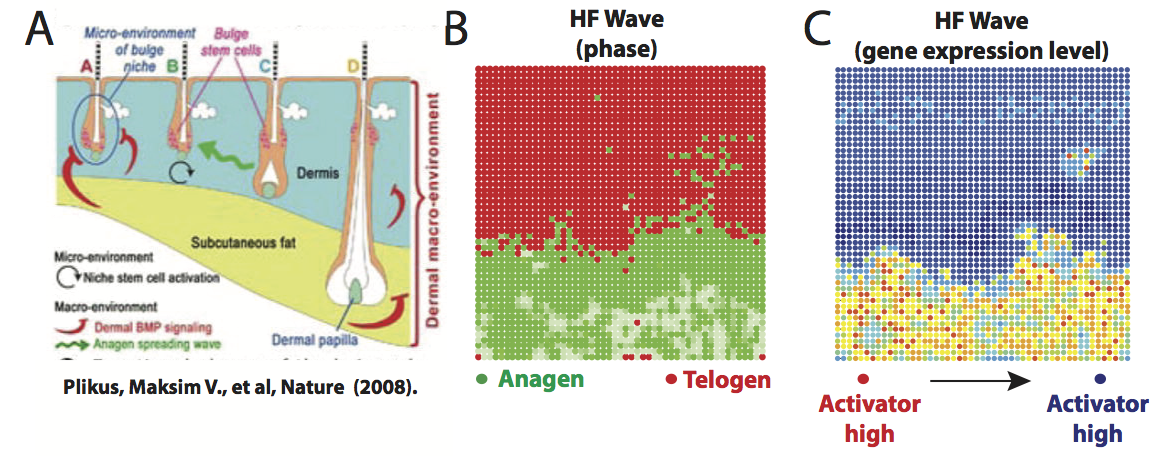Modeling the Hair Follicle
The hair follicle (HF) is a skin mini-organ that undergoes cyclic bouts of regeneration throughout its lifetime. This ability is in part related to its distinct stem cell populations, making the HF a good model to study the mechanisms of stem cell regulation and tissue regeneration. The hair growth cycle consists of three phases: anagen, catagen, and telogen. Anagen describes active hair growth characterized by epithelial cell proliferation and differentiation. Catagen is a phase of apoptosis-driven HF involution, and telogen is a phase of relative quiescence. Cyclic growth is regulated both by signaling within the HF (microenvironment), and long-range interactions between neighboring HFs and other skin components (macroenvironment). Bmp and Wnt appear to constitute the core signaling mechanism of the hair cycle clock, and ligands and antagonists for both pathways mediate macro-environmental coupling between HFs. Additionally, FGF, PDGF, TGFβ, TNFα and other signaling pathways have also been implicated as hair cycle modulators. Overall, correlations between hair cycle phases and various molecular activities suggest that coupling between the activator and inhibitor serves to jointly regulate hair growth timing, and the co-option of these signals into skin macro-environment produces wave-like coupled hair growth. Studies on hair growth waves revealed four functionally distinct cycle sub-phases, each with its distinct activator/inhibitor profile: propagating anagen (P), autonomous anagen (A) refractory telogen (R), and competent telogen (C). P-phase HFs can induce neighboring C-phase HFs to enter anagen via diffusible activators, leading to hair growth coupling, while A-phase anagen or R-phase telogen HFs cannot couple due to high levels of inhibitors.
We build computational models to study the cyclic HF growth mechanism and communication behavior HF population. Our current interests include: 1) how the gene expression network including the pathways of WNT, BMP, Fgf, Shh, etc., each having different target sites along the HF, orchestrates to organize the cyclic growth dynamics; 2) how diffusive signals drive the coupling between multiple HFs and the contribution of the skin domain heterogeneity to HF wave patterns.
